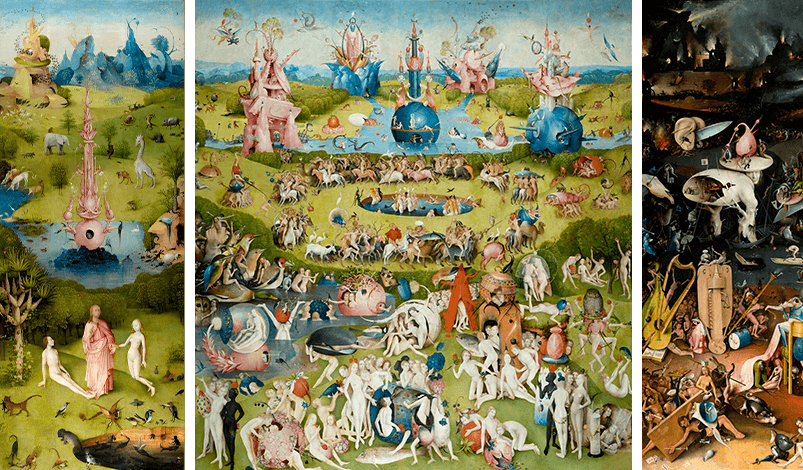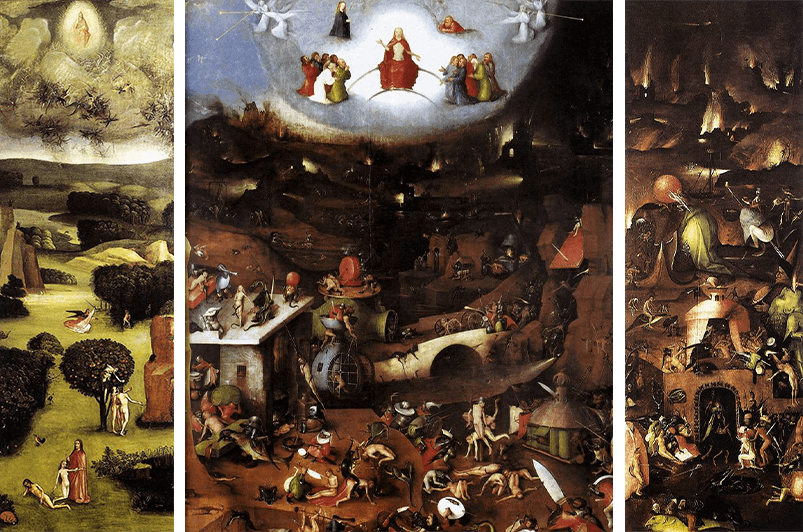


Jeroen Bosch
ca. 1450 – 1516
Jheronimus Bosch, better known as Jeroen Bosch or Hieronymus Bosch, is an artist who created his hallucinatory world of monsters, monstrosities, tormentors, and mythological creatures at a time when the Middle Ages passed into the Renaissance, a time when not God but man became the center of the world.
REMASTERED is inspired by two important works by Bosch, Garden of Earthly Delights (1480-90) and the triptych The Last Judgment (ca. 1482).

Jheronimus Bosch, Garden of Earthly Delights, 1480-90, oil on panel, triptych 220 x 389 cm. Prado Museum Collection, Madrid

Jheronimus Bosch, The Last Judgment, ca. 1482, oil on panel, triptych: middle 163 x 127.5 cm; side panels approx. 167 x 60 cm, Collection Akademie der bildenden Künste, Vienna
Both artworks are teeming with ‘headfooters’, strange and funny creatures that play a questionable role in medieval culture. You can take that word literally: they are dwarfish, composite figures without torsos, with the head of a human or animal, walking on human feet or animal legs. In Bosch’s universe, ‘headfooters’ are regarded as the embodiment of the lowest instincts. Devilish qualities were attributed to them. They were associated with impermanence, lust, and pride, with greed and stinginess.
‘Headfooters’ were used as a border decoration of miniature paintings that Bosch has certainly seen. He was a well-read man and moved in the higher circles where prints and decorated manuscripts were collected, such as the Boeck by Tondalus Vysioen, printed and published in ’s-Hertogenbosch in 1484. He studied animals, flowers and plants in detail and searched for different types of people everywhere.
It was occasionally war between the provinces Brabant and Gelderland in the 15th-16th centuries which also affected ‘s-Hertogenbosch and the surrounding area. As a boy of thirteen, Bosch witnessed the city fire in ’s-Hertogenbosch. Perhaps he has depicted thesetraumatic experiences again and again in his paintings. A good example of this is The Last Judgment (ca. 1482) where warlike monsters populate most of the middle hatch, where death and destruction play an important role.
